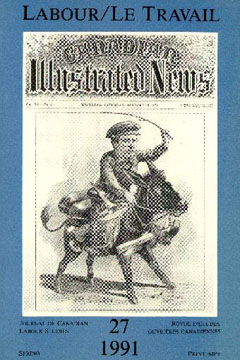Abstract
Urban telegraph offices in the early twentieth century employed both women and men as telegraph operators. The fact that both sexes worked together in this skilled occupation makes telegraphy an interesting case for the study of links between gender and skill. Through an examination of the labour process and the telegraph operators' craft culture, this paper describes how the connection between masculinity and skill was established. It is suggested that, while Morse operating provided conditions in which that link was questioned, technological change during World War I helped create a more exaggerated gender division of labour and a newly-defined, fortified link between masculinity and ability
Resume
Au début du vingtième siècle, les postes de télégraphistes en milieu urbain étaient occupés autant par des femmes que par des hommes. L'existence d'une telle main-d'œuvre mixte en télégraphie rend cette occupation qualifiée particulièrement intéressante pour l'étude des liens entre les attributs des sexes et de la qualification. En examinant le procès de travail et l'identité culturelle des télégraphistes, cet article décrit comment se concrétisa l'enchaînement entre la masculinité et la compétence de ces opérateurs. Quoique la transmission par l'alphabet Morse s'effectuait suivant des conditions propres à remettre en question une telle identification sexuelle, les changements technologiques au cours de la première Guerre mondiale nous apparaissent comme ayant contribué à accentuer la division sexuelle du travail et à lier encore plus étroitement la masculinité à l'habileté des télégraphistes.
